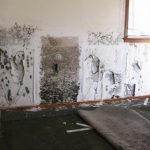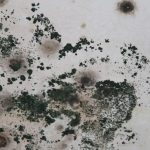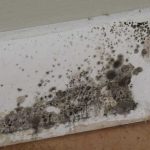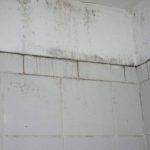Mold is a type of tiny organism which can grow anywhere in a temperate region to seek oxygen, organic material for food, and dampness to live.
It’s no wonder; you will meet this creature in humid areas at your home. One of its likable spots is no other than the basement – the fungus existence is a common matter for homeowners.
Have you recognized that there are myriad types of mold from green to gray? However, at the bottom, it’s found that those two varieties – black and white mold – have turned on some terrible troubles like health problem for instance.
How does black mold grow in basement?
Before reaching into the discussion about darkish fungus in the basement, let’s define what black mold is. In a brief explanation, black mold is a living microscopic organism of which color is inky and coal-look.
The mold spore is somehow invisible – you will never realize that your surrounding is loaded with the germ.
Black mold often thrives on the porous materials like fabrics, rug, drywall, and wooden household objects. To flourish, the surrounding must be moist, warm, and shadowy.
The water damage mold even could survive for a longer time. For those who reside in a damper, the area is prone to the mold problems and diseases related to it.
On a rare chance, the black mold’s life begins when the spot has been already soaked.
For instance, if you’ve just experienced flood and let the home basement remain wet (the porous object like the carpet is not completely dry), the mold starts breeding and grows very fast under the rug. Other strategic places include the sink and bathroom.
How does white mold grow in basement?
White mold doesn’t belong to any kinds of mold – most of out the fungus species normally have dark appearances.
It shifts into white or fairly close to a lighter color when the organism undergoes the aging process, mainly after it carries out the spores. This type of mold should be pulled out from anywhere at your home.
White mold that lives in the basement often comes out after either the flooding or prolonged humidity. The living thing categorized in the group of white cottony mycelium usually thrives on the water damaged the organic material.
The white mold has an identical look with the Efflorescence – that’s why most people always mistake it.
White mold normally makes formation on the wooden object especially when it has high humidity or is within the moist environment.
The tiny organism even could spread rapidly as the wood is the proper platform – an organic substance – that equips food, moisture, and everything it requires. It’s often found in the basement as the environment supports the growth.
Does mold in basement affect your health?
An important thing to note is that removing the mold growing in the basement out of your home is highly recommended – this one is due to the health reason.
When the spores multiply rapidly and spread throughout the air, the surrounding people will directly be affected. The early symptoms might be overlooked, yet the disease progress will worsen the sufferers.
Once you’ve got the spore’s exposure, you will undergo typical symptoms such as coughing, skin rashes, sore throat, watery and red itchy eyes, and the respiratory problem (asthma and even pneumonia).
If you find this kind of indication, it must be clear that you have to see the doctor for the better treatment.
The greatest way to stay away from the mold exposure is by preventing its growth in the initial place. You need to get suspicious over a wet area around you then wipe it up soon with a dry cloth as soon as possible.
The mold can’t thrive in a dry spot – thus, being responsive to clean up the muggy area is nothing yet excellent.
Steps to prevent mold in basement
Here are several ways to prevent the basement mold so that the risk to get affected by the mold diseases could be lessened:
- Check out the level of dampness. Being cautious toward the humidity level to prevent the mold growth should be something primary. The apparatus to measure it is by applying a hygrometer – be aware of an area in the basement with 45% of humidity or more.
- Benefit the dehumidifier. This kind of appliance is overly effective to measure the moisture in the basement.
- Don’t grow plants inside your home. For those loving gardening, you are not suggested to bring your flowers inside the house. Plants having high humidity provides good nutrient for molding and mildew.
- Never let your basement packed. An abundance of storage items and objects will confine the air movement and diminish the ventilation process.
- Don’t keep wooden objects in the basement. Wood is a type of porous material, ideal for mold to thrive. Instead of doing it, leave the space airier.
- Be sure to direct the water. There should be a particular passage in the basement for snow and rain so that the moisture problem could be decreased.
- Fix the leaks immediately. When you see any leaks in your basement, let them repair to anticipate the fungus growth.
How to remove mold in basement
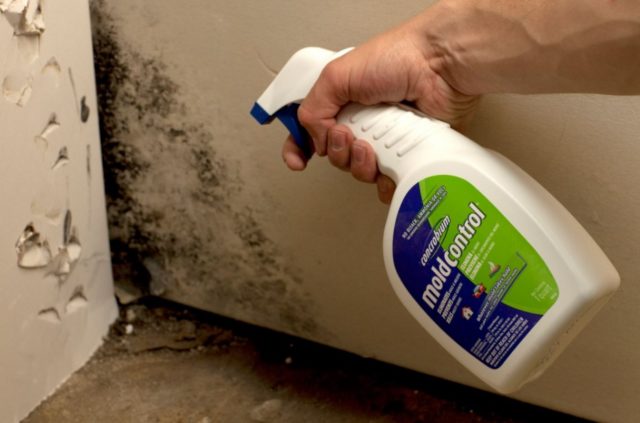
Here are several useful approaches when it comes to getting rid of the basement mold:
- Identify the mold type and prepare the area. Before scrapping off the fungus, it’s vital that you classify the organism and clear out all of the objects in the basement.
- Begin scrubbing the affected area. To do this, you can use the cleaning solution. The conventional method is to blend a cup of bleach and water in a small bucket. Rub the mold spots vigorously with a specific brush with the liquid mixture.
- If it’s needed, you can use the stain-blocking paint. Coat the basement with this thick protective liquid so that the mold is uneasy to reach the spot in the future.
The basement mold will be a serious problem if you don’t remove it out immediately. So, be sure to read the steps on how to prevent and remove the mold in the basement.

